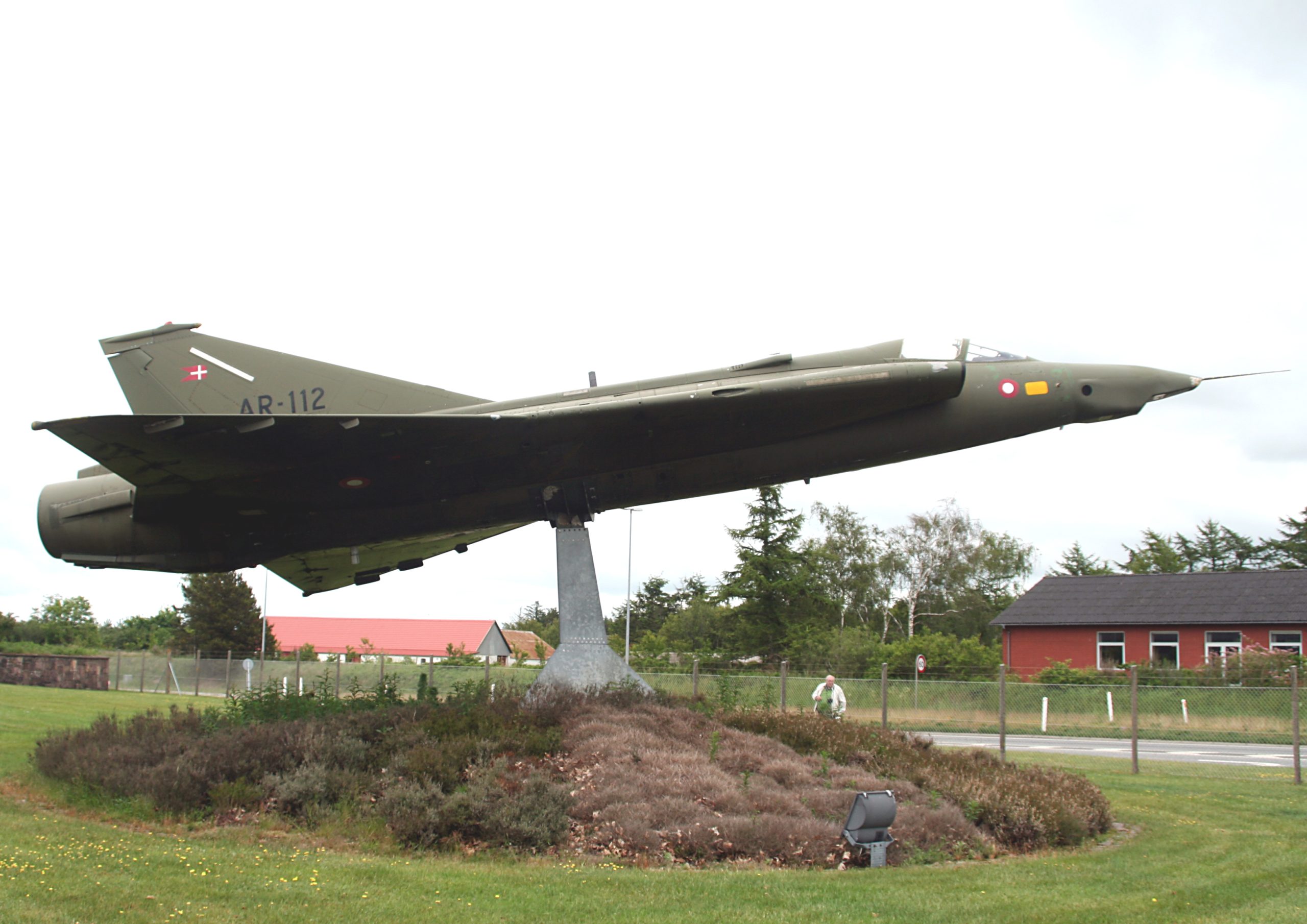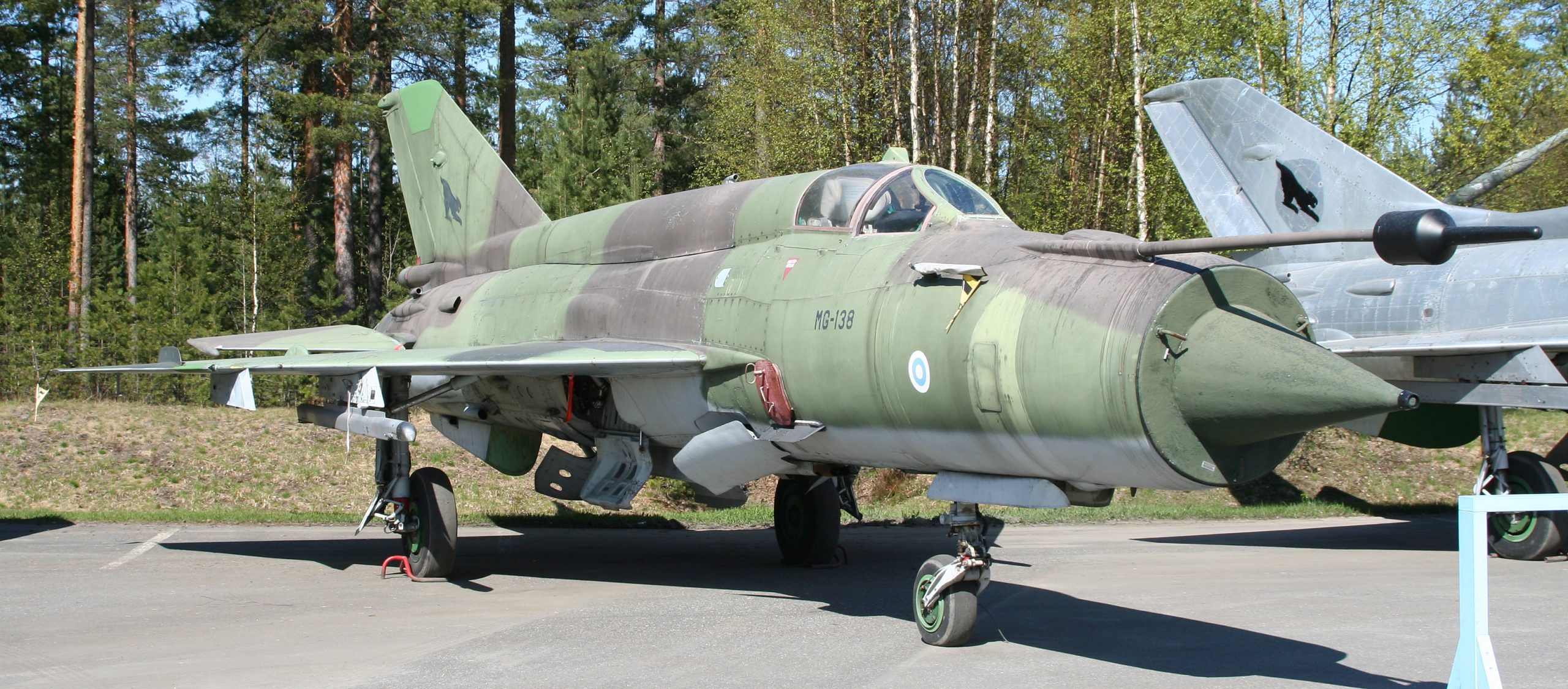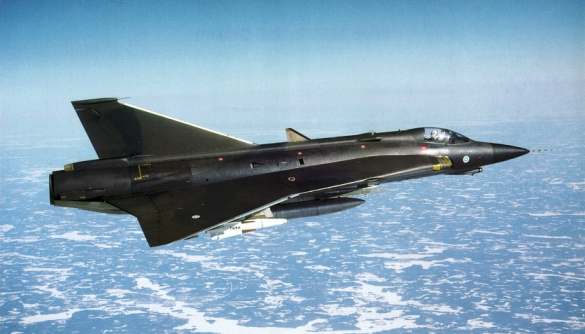J 35 flying overseas
More J 35 Draken (Kite) aircraft were exported than any other Swedish-built aircraft until the JAS 39 Gripen (Griffin). It was important that Sweden’s two neighbours, Denmark and Finland, who decided to invest in the Draken when new aircraft were to be acquired. Switzerland also considered the Draken, but eventually signed a contract to procure 100 licence-built French Mirage IIIS multi-role aircraft.
The Draken lost out in the end, one of the reasons being that it was considered to be too much of a pure fighter aircraft. Despite this, the Draken proved in several respects to have better performance than the Mirage, among other things at low height. This led in the end to a political scandal in Switzerland when it was discovered that the Mirage would cost far more than the Swiss Air Force had promised. Finally the head of the Swiss Air Force lost his job.
The purchase of military aircraft is not always determined by the best product, but by the best political choice.
Denmark
The sale of Draken aircraft to Denmark fared much better. Denmark wanted both a new ground attack aircraft and a suitable reconnaissance machine. Although the Draken had not been designed for ground attack, it was capable of the task. At first it was rejected, but after some adaptation Denmark was offered a special version for ground attack called the SAAB 35XD. Npw the Draken was back in the race and an order was concluded in 1968. Denmark purchased 20 of the new attack version, 20 of a reconnaissance versionen and a total of 10 of a 2-seat trainer variant.

A danish Draken on a display stand outside its former airbase. Photo Peter Langdal
Finland
Then it was the turn of Finland, which had an urgent need for new fighters. The Draken faced its rival, the MiG-21, that was already serving in the Finnish Air Force. It was rather cheaper to buy the MiG-21, but the Draken won out thanks to cheaper maintenance, more economical operation and a longer airframe life.

The MIG-21 is a highly succesful fighter design of the same generation as the J35 Draken. Here is a finnish example that came to serve alongside Draken in the Finnish Air Force. Photo Peter Langsdale.
The Finnish Draken variant was based on the J 35F and in general had the same equipment and armament as the Swedish version. There was some additional work to ensure that it would not be possible to read out which frequencies the Swedish version used to control the RB 27 missile, but Finland finally received its Drakens in 1972. The Drakens flew in Finland for a year longer than than those in Sweden, up to 2000 when the last aircraft was retired at the Rovaniemi air base.

A finnish Draken in the skies over ”The land of the thousand lakes”
Austria – the final Draken operator
The third country to buy the Draken was Austria, which had earlier purchased the SAAB J 29 Flying Barrel. Interest was first shown in the 1960s, but the business was not concluded until 1985.
Austrian military aviation was restricted because of agreements after the end of the Second World War. There were limits in the form of not permitting aircraft to be equipped with target-seeking missiles. Because of this restriction, Austria decided on the older J 35D model, which had two 30 mm automatic cannons instead of the one cannon fitted to the newer J 35F.
This led to a heated debate in Austria since the selected Draken was an older version and the aircraft that were purchased were second-hand. However all the aircraft were thoroughly reconditioned before they were delivered to their new owner, the Austrian Air Force,
With the fall of Jugoslavia in 1991 and a 10-day war between Slovenia and Jugoslavia, the latter’s military aircraft repeatedly intruded on Austrian airspace and the Drakens’ limited armament came into play. Despite this limitation the Austrian J 35s managed to prevent the war from spilling over the border into Austria and thereby dragging the country into the conflict. These efforts also meant that the Austrians’ perception of the ”Flying junk” (as the Draken was called by its detractors) changed overnight.
At the demise of the Soviet Union in the same year, the old restrictions dating from 1945 ended and Austria could obtain guided missiles for its Drakens.
Austria became the country that operated the Draken longest of all. It was not until 2005 that the Austrian Air Force carried out its last operation with the Draken, which was then replaced by the Eurofighter Typhoon.
